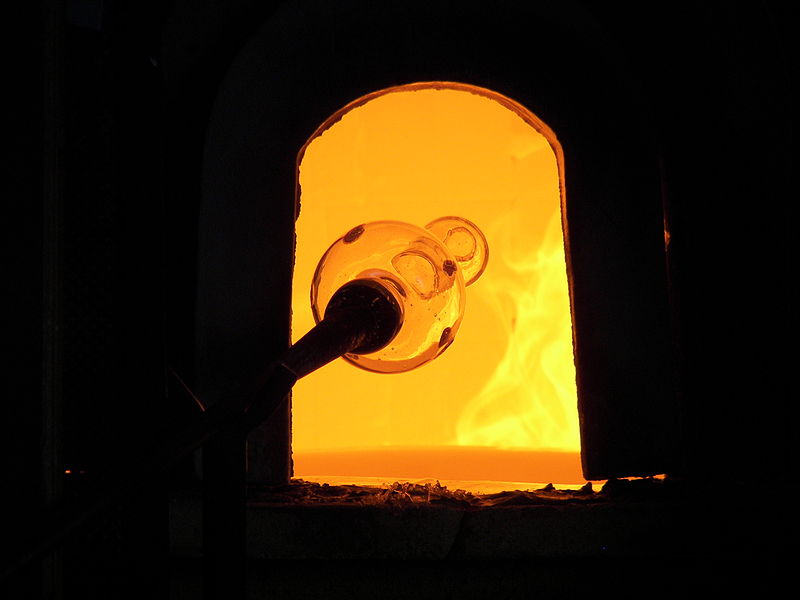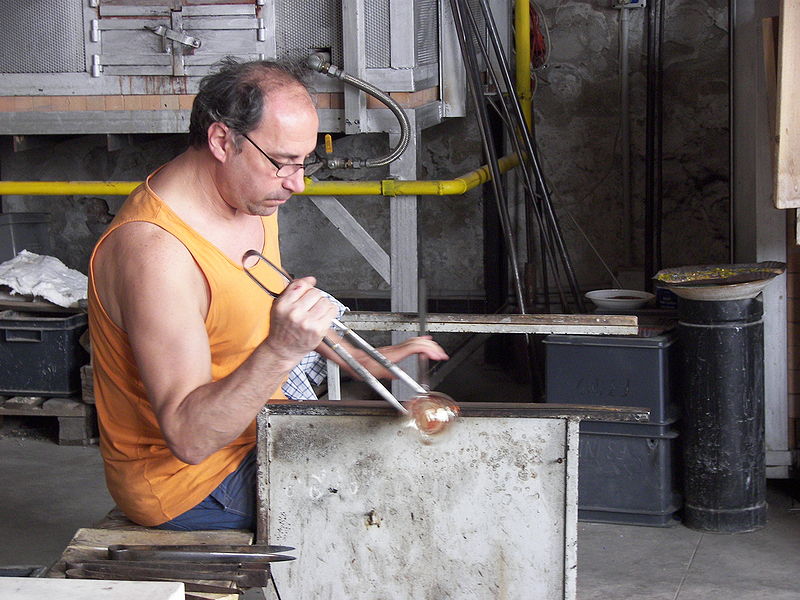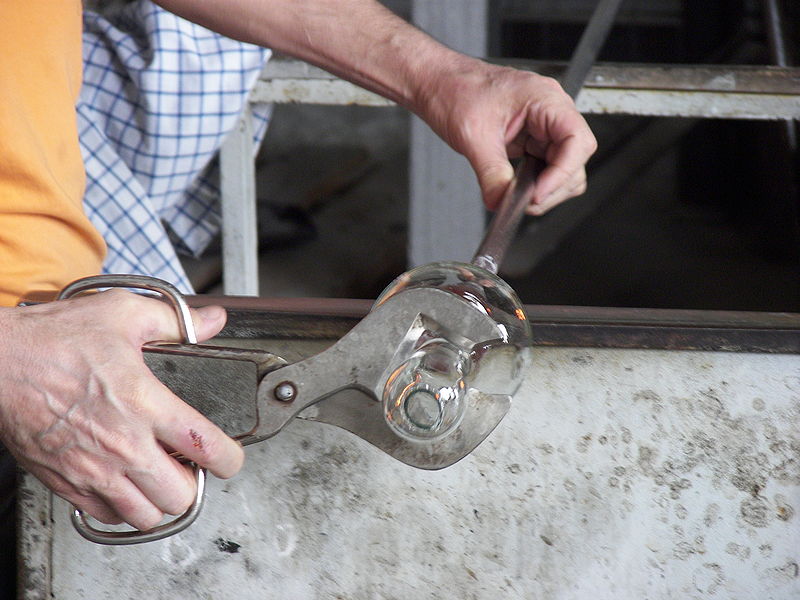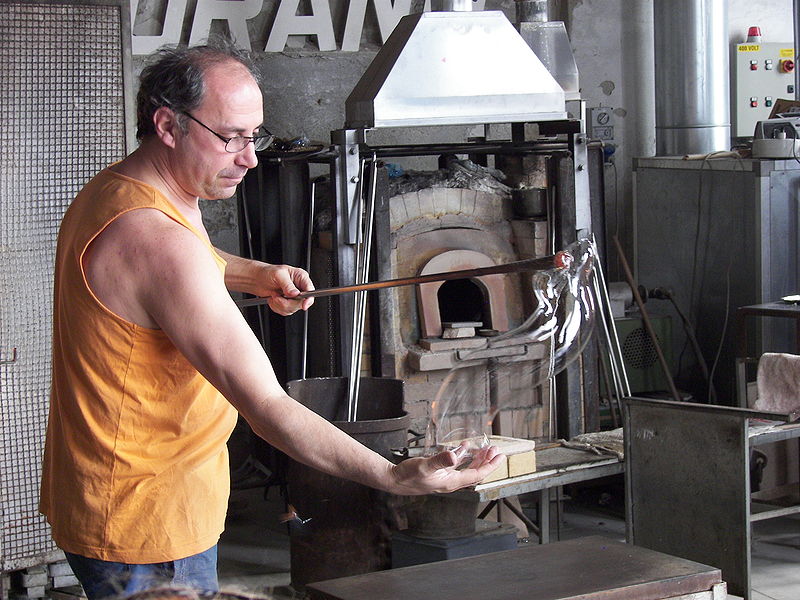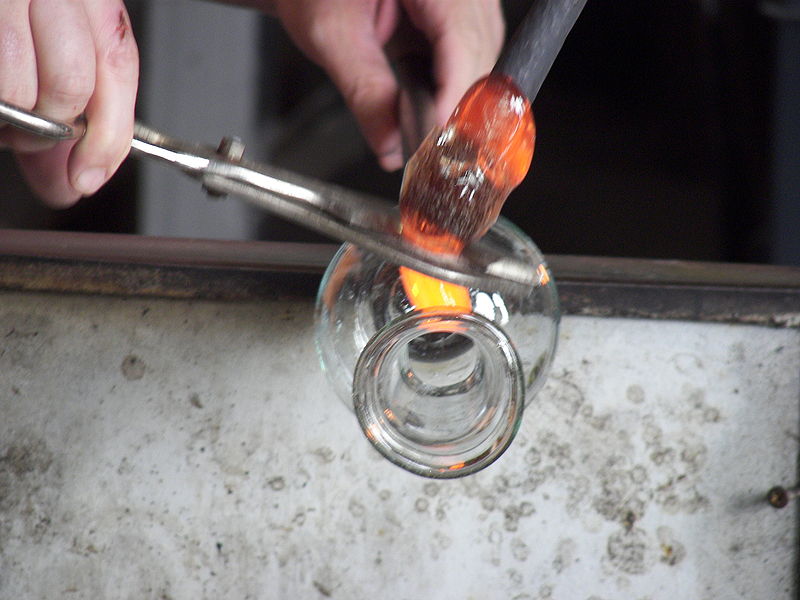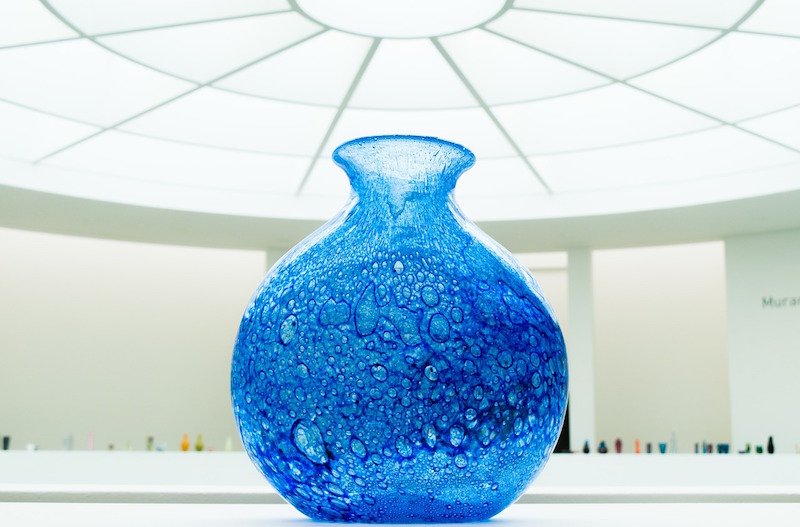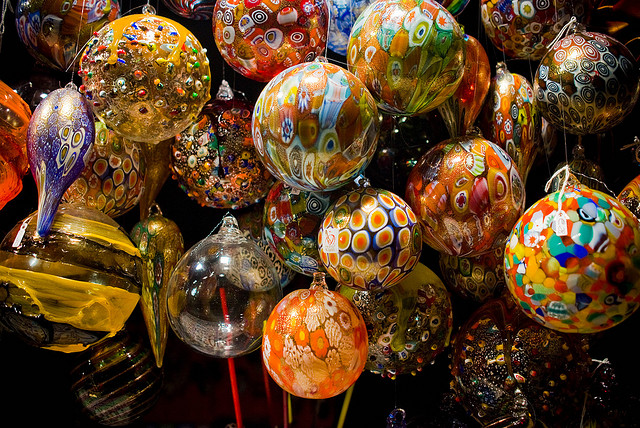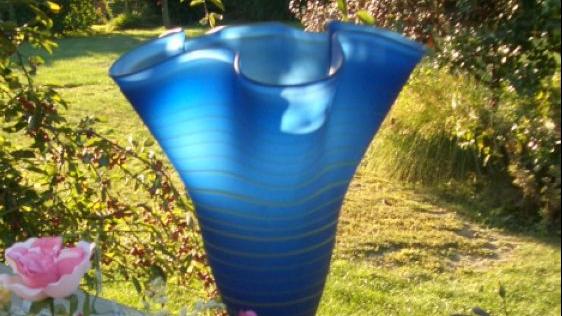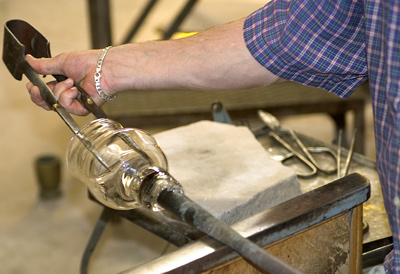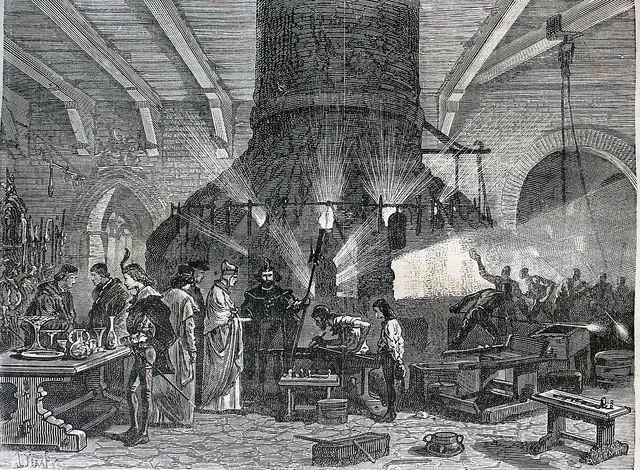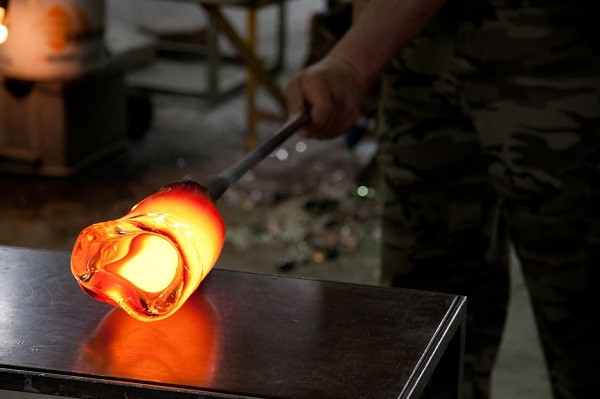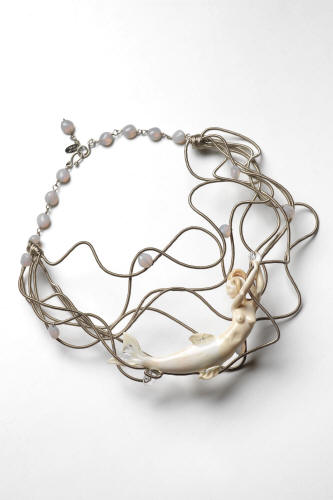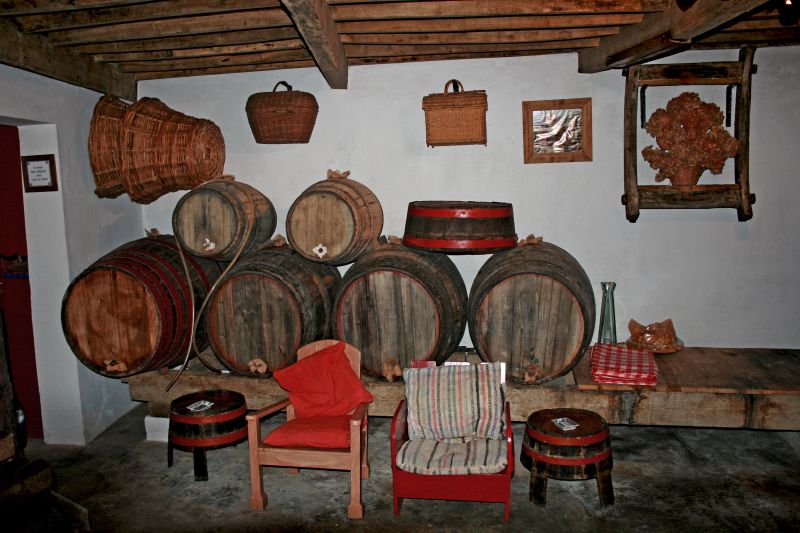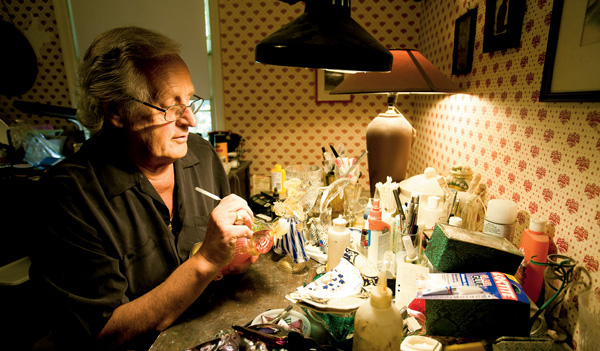Murano: The Method Behind the Magic
Makers of glass from all over the world make a trip to Murano, to witness the making of glass using techniques some of which are now commonly known. But what sets Murano glass apart from those coming from other parts of the world is the mastery of its makers.
The wide diversity of glass products created at Murano speak of the intricacy of different techniques used. While Murano is famous for its beads, the Murano vases, containers, and figurines are equally well known. The basic precept is simple: silica is the raw material used to make glass.
Silica becomes liquid at very high temperature, and can be moulded and shaped, and even re-heated if the work so demands, before it is finally cooled and solidified into a specific shape. The original master craftsmen of Murano realized this and set about taking advantage of this. Their skill lay in the handling of this molten silica before it became glass.
The modern glassblowers of Murano rely on the same principle. In order to allow themselves the time to play out their skills to the maximum, they slow down the cooling process by adding other materials called flux or melting agents, like sodium oxide ,which stay soft at lower temperatures. This keeps the glass softer for longer, and gives the glassblowers more time to twist and turn, shift and cut, in order to create their work of art in Murano glass.
In addition, the glassblowers may add sodium in order to make the glass opaque, or nitrate and arsenic to eliminate the bubbles that occur in the natural process of glassblowing. Different colors usually mean the addition of different substances to the mix: for instance, the color Aquamarine is obtained by using copper and cobalt compounds.
The molten silica is usually kept at high temperatures in a crucible inside a furnace, from where it is lifted with the use of a iron rod or blow pipe. The iron rod is used if the object to be created is solid, like certain kinds of paperweights or ashtrays, for example, and a blow pipe or canna da soffio is used for hollow products like vases and containers.
Whether a blowpipe or iron rod is used, the red-hot silica mix is rolled on a flat steel surface to give it shape. Traditionally, a marble surface was used because the glass did not stick to it, just like it does not attach itself to steel.
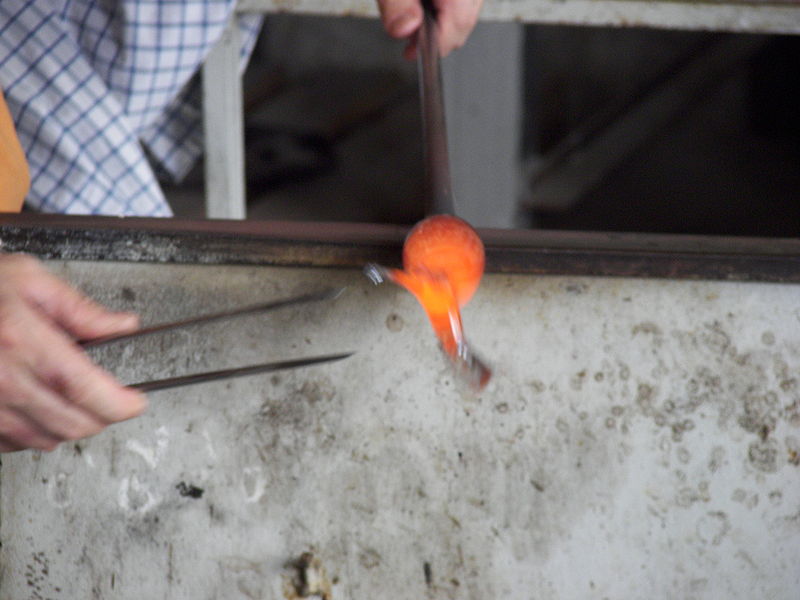
Various types of tongs and pliers, known as borselle are used to hold, twist, and shape the piece. Different types of molds may also be used during this process. When the product is nearly ready, it is cut off using taglianti, or large glass-cutting clippers. In short, a wide array of iron and wooden implements are used as the silica mix is heated and reheated, while the master glassblower works on it.
It is at this stage that the mastery of the Murano glassblower comes into play because an excellent co-ordination between wrist movements and tool manipulation is an absolute requirement if the product is to be well-balanced, with even edges. The precision and good looks of a product speak of the skills of its creator in handling this stage of production, during which apprentices and assistants usually help a master glassblower. Depending on the skill of the assistant, he would be handing the master the correct tools, actually helping with twisting and cutting the glass, or heating and reheating glass for different parts of a big project.
Once the silica mix is in perfect shape, it is cooled slowly through a process known as annealing. This settles the internal tensions within the glass, especially if different pieces or varieties of glasses have been used to make a single product. After annealing, the glass is less liable to break, and is ready for further decoration if necessary.
Though furnaces have changed over the centuries to include modern technology, the implements used by hand and the skills remain essentially the same today as they were in the 14th century. It is the skillful use of age-old implements using techniques handed down from generation to generation that gives Murano glass its exceptional beauty and well-deserved fame.
By Damyanti Ghosh

